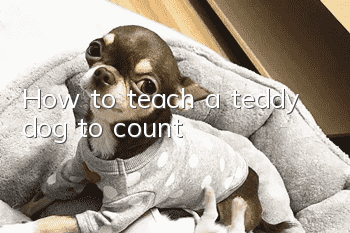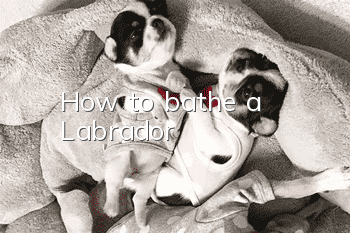How to teach a teddy dog to count

1. Passwords and gestures
The training password is "bark". In the gesture command, the trainer extends the fingers of his left hand to direct the teddy to bark. During the performance, he secretly directs the teddy with his left hand. The trick to training is to let the trained teddy bark according to the number of fingers stretched out by the trainer's left hand. For example, if you stretch out 1 finger, the teddy barks 1 time; if you stretch out 2 fingers, the teddy barks 2 times; if you stretch out 2 fingers, the teddy barks 2 times; 5 fingers, Teddy barks 5 times. The teddy trainer writes on the blackboard with his right hand, so the hand gesture command to direct the teddy to bark can only be issued with his left hand.
2. Training process and methods
During training, use your right hand to write some numbers or calculations on the blackboard, use the five fingers of your left hand to direct the Teddy, and use the Teddy's visual function to recognize the different gesture commands of the trainer. Follow the trainer's instructions of different hand gesture commands to bark.
1. The beginning of training. The trainer issues the "bark" command, and at the same time uses his left hand to issue a gesture command of extending his thumb and curling the other four fingers, ordering the Teddy to bark once. When Teddy barks, he is immediately given routine rewards such as meat to solidify Teddy's conditioned reflex of barking according to his owner's gestures. Train 4 to 6 times a day, 10 minutes each time, train continuously for 2 to 3 days, and then proceed to the next step of training after consolidation.
2. The Teddy trainer issues the "bark" command. He extends his thumb and index finger with his left hand to direct the Teddy to bark, and orders the Teddy to bark twice in a row. When Teddy barks, immediately give Teddy meat and other routine rewards to solidify Teddy's conditioned reflex of barking twice in succession according to the gestures of the trainer. Then carry out consolidation training according to the above method.
3. During training, the owner holds out three fingers and orders Teddy to bark three times. Teddy barked three times in a row and immediately gave routine rewards such as meat, which consolidated Teddy’s conditioned reflex of barking through visual recognition of the owner’s different gestures. Then carry out consolidation training according to 1, so that Teddy can bark accurately according to the different gestures extended by the owner.
4. During training, the trainer uses his left hand to extend the little finger, index finger, middle finger, and ring finger but curls the thumb, and orders the trained Teddy to bark four times. Teddy did it. Immediately give Teddy meat and other routine rewards to solidify Teddy’s conditioned reflex of barking based on visual observation of the owner’s different gestures. Consolidation training 1 is carried out. If wrong barking occurs, it should be corrected through training.
5. Final training. The teddy trainer stretched out his open-fingered palm and ordered the teddy to bark 5 times. If Teddy does it, immediately give him a routine reward such as meat.
6. Review and consolidate training. The first is to train the Teddy to constantly change the gestures of extending different fingers to instruct the little Teddy to bark accurately; the second is to gradually cancel the verbal command at this training stage, and gradually achieve the goal of completely extending different hands according to the owner. Direct Teddy to bark with numerous hand gestures to get ready for performance training.
This approach may be somewhat suspected of cheating, and the calculation range is relatively small, but the results are faster. If you rely solely on stimulation training to force Teddy to remember arithmetic within 20, it may take a certain amount of time. But in the final analysis, Teddy's ability to count is not a real calculation, but a habit developed through long-term training, or a conditioned reflex.
- What should Labrador dogs eat when they are in heat?
- What can Bichons eat to keep their fur from turning yellow?
- What are the symptoms of calcium deficiency in Samoyed puppies?
- How long does it take for a Labrador retriever to moult?
- What to do if Samoyed puppies are picky eaters
- How to tell if a Border Collie is a purebred?
- What should I do if my Yorkie’s ears can’t stand up?
- How to feed a Labrador
- How to keep a Husky strong
- What to do if your Samoyed puppy loses hair



